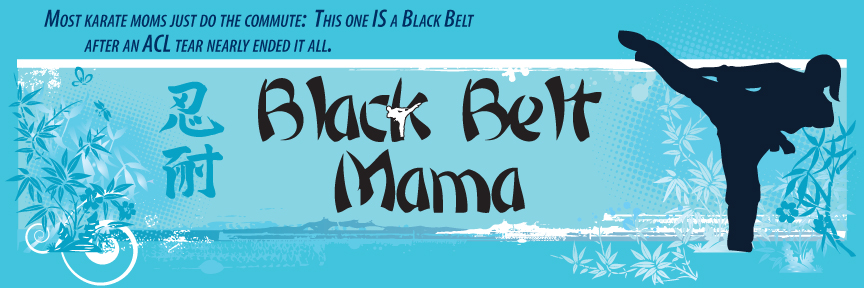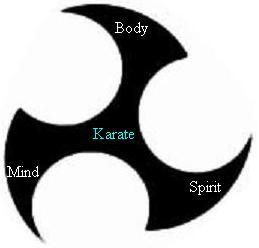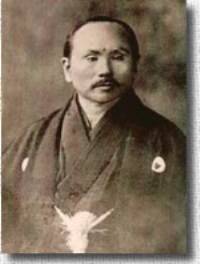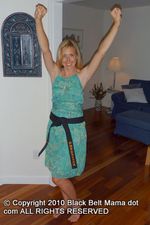March 10, 2008
Where Will We Take the Martial Arts?
An Exploration Into the Classical Ways of Training
BY: MATTHEW APSOKARDU
The world is arriving at a critical point in martial arts transmission. Fewer and fewer original masters remain from direct Asian lineages of the various fighting arts. Leading the way now is the first generation of global students. These soldiers and students from the U.S., along with areas like Europe and Australia, are becoming the key to proper transmission of classical martial arts.
While these few men and women struggle to transmit their knowledge fully, they must battle against the behemoth that is modernization and capitalism. Karate and tae kwon do schools pop up in every strip mall, offering quick belts and flashy techniques with no obligation required except monetary compensation.
Nor can we underestimate the impact of Mixed Martial Arts. MMA offers an eclectic amalgam of techniques while forgoing activities like kata. MMA has produced many great fighters and is a legitimate form of combat exercise – but also steers many potential students away from traditional training.
Truly, it is up to the next generation, the kyu ranks and lower dan ranks of every style, to learn how to learn the old way; to refuse the easy gratification of trophies, money, and false notoriety and pursue the intangible goals of the past.
The big question is – how do we go about training classically?
The following are a few quick tips with that goal in mind. This is a very sparse list; simply some key points that I believe are important and that I continue to work on personally. This is not an analysis of techniques, nor is it a guide to sparring. But for those seeking something of the old budo heart, it may be helpful.
In trying to keep things "old style", I would like to break down my suggestions in traditional karatedo fashion – Body, Mind, and Spirit.
TO TRAIN YOUR BODY:
Stick Around
If you want to get anything out of a classical style, you have to stick around. Six months won’t cut it. Six years won’t cut it. The way old-style teaching operates is through repetition and muscle memory. After developing a rock solid foundation, instructors will then teach you how to work outside of kata and routine drills. But if you ditch once you get a first degree black belt, all you’ve got is a couple of prearranged exercises. Not very useful against a live opponent.
Many of the most advanced techniques found in old arts are just extraordinarily refined basics. Strikes made with perfect timing at precision targets, delivered in a strategic order, result in some stunning effects (if you’ll excuse the pun). It takes a while to learn these targets, and even longer to utilize them correctly against free-willed opponents who don’t feel much like getting hit.
The best way to ensure ‘sticking around’ is to first realize what you want in a core style. Look into different styles and realize which fits your lifestyle and body type. Once you’ve established that, keep it your core style and develop around it (to learn more about this training theory, consult Forrest Morgan’s "Living the Martial Way.") Remember, sports are sports. Some schools simply don’t teach classical theories, so if you want them, keep looking.
Investigate
Do your homework! Don’t cringe, just do it. Actually…cringe. The martial art universe is epically large and hard to put together. When you first begin studying, it will seem all but impossible to put your own style’s history together, let alone how it interacts with all the other styles, and how those styles interact with other countries, and so on and so forth. Even now when I think about the vast martial scape it makes my head spin. But the old masters made it their business to know such things, and so must we. Not to mention, by reading from credible sources and watching videos of legitimate masters, any martial artist’s eyes can be opened to an array of concepts and ideas they never considered before; and the best part is, it doesn’t matter what rank you are. There WILL be something to learn.
Remember, the old Okinawan sensei intermingled their ideas and techniques. They bounced concepts off of each other in the hopes of refining their systems. They learned from multiple instructors and utilized those techniques that worked best (yes, it’s true. You eclectic folk can remind your hard-lining friends).
TO TRAIN YOUR MIND:
Don’t Obsess Over Rank
Ranking in martial arts started off innocently enough – Jigoro Kano wanted to gauge the progress of his students. Unfortunately, rank has become a bit of a monster and brings out negative qualities in a lot of people. Many lust after rank. Many abuse it once it’s attained. Others will cheat and barter just to get it. This is not at all what was originally intended.
The old budo styles were used to prepare samurai, and to a lesser extent soldiers, for battle. Sword cuts, empty hand techniques, spear thrusts…as much as they could pack into the minds of the combatants before war began. There was no time and no need for rank because one simple factor evaluated your skill level – whether or not you lived.
It’s ok to feel grateful and honored as rank comes to you, but putting more stock in it than that can lead to some of the troubling situations we see abundant today.
Optimize your mental acuity
Mental prowess is very valuable. Being able to effectively process that which you see and how you react is one of the benefits of martial art training. But there is a lot more to it. Mushin is a term that roughly translates to "no mind" and refers to a complete readiness and quieting of the mind. When a karateka effectively utilizes mushin, processing what you see and reacting is no longer necessary - there is simply reaction. Beyond mushin is zanshin, roughly translated as "remaining mind." Zanshin helps keep a martial artist aware of his surroundings at all times and alert for that which may come. One who utilizes zanshin is aware of the position of the sun, the condition of terrain, and every movement of his opponent. Forrest Morgan equates it to a wolf that hovers over his opponent, teeth bared and ready to break his opponent’s neck at the first sign of movement.
One who trains in mushin and zanshin may begin to develop the Budo ideal of Shugyo No Mokuteki. Or as Miyomoto Musashi explained it, "a mind as high as Mt. Fuji…you can see all things clearly. And you can see all the forces which shape events; not just the things happening near you." By developing your mind in this manner, conflict can be resolved or avoided before it begins.
In order to reach mushin a heavy emphasis on kata should be maintained. Kata can be a mobile form of meditation and teaches the body, through extensive repetition, to move without conscious thought.
To reach zanshin, a martial artist must carry their art with them at all times. They must constantly analyze scenarios, environments, body language, and ‘gut feelings’ experienced in the hara (lower abdomen region). This, combined with dojo training and kumite, is critical.
Explore without Deviation
One of the biggest complaints about older arts is their seemingly stodgy nature. Moves in kata seem quaint and unrealistic. They appear completely unresponsiveness to the ever-changing nature of attackers.
That’s true…if you never explore. Kata, or prearranged attack-defense sequences, are useful as learning devices. The concepts in each kata are carefully devised, multipurpose actions that, once ingrained in the mind, can become infinitely useful. Once technique and good habits are reflexive instead of thought-induced, the practitioner can more fully explore the art (and thus scenario, intent, opponent, and other variables are opened up for consideration).
Unfortunately, problems arise with hardcore explorers. Sometimes, they fall in love with their own interpretation and decide to change kata and material entirely. These people believe they are changing things for the better. For that specific person, maybe it is better. But kata and traditional arts are designed to train everyone, and can flex for specific needs, but must be flexed back to their original form if they are to be sustained for future students.
Think of kata as a book. You first read the words in the book, but then your imagination takes hold and creates a whole world around those words. You wouldn’t go changing the words to better fit your imagination would you? No, because then the next reader won’t be able to explore the original masterpiece.
TO TRAIN YOUR SPIRIT:
Realize the Purpose
Karate and other traditional arts are not simply about fighting. They are about Life Protection (if I may borrow a term from a writer later in this month – Kyoshi Bill Hayes). The classical martial artist protects those around him/her and even protects the lives of wayward attackers by withholding technique as much as possible; but if the situation demands it, responds with devastating consequences. Furthermore, practitioners of do arts (karatedo, judo, taekwondo, kyudo, kendo, iaido, hapkido, aikido, etc.) concern themselves with following "the way."
On the surface, "the way" of any martial art is simply the unique approach that art takes toward combat. "The way" of aikido involves melding with an opponent’s energy and using their own force against them. "The way" of tae kwon do is the utilization of both hand and foot techniques, but with a strong emphasis on kicking. These stylistic differences are notable, but not really the reason the old masters placed do on the end of their arts. Instead, they intended "the way" to be a path in which students could build their character and reach self actualization.
To better understand such character building, here are just a few precepts written by Funakoshi Gichin, founder of Shotokan Karate and considered the father of Japanese karate:
– Karate-Do strives internally to train the mind to develop a clear conscience, enabling one to face the world honestly, while externally developing strength to the point where one may overcome even ferocious wild animals. Mind and technique become one in true karate.
– Just as it is the clear mirror that reflects without distortion, or the quiet valley that echoes a sound, so must one who would study Karate-Do purge himself of selfish and evil thoughts, for only with a clear mind and conscience can he understand that which he receives.
– He who would study Karate-Do must always strive to be inwardly humble and outwardly gentle. However, once he has decided to stand up for the cause of justice, then he must have the courage expressed in the saying, "Even if it must be ten million foes, I go!" Thus, he is like the green bamboo stalk: hollow (kara) inside, straight, and with knots, that is, unselfish, gentle, and moderate.
– To win one hundred victories in one hundred battles is not the highest skill. To subdue the enemy with out fighting is the highest skill.
– When you look at life think in terms of karate. But remember that karate is not only karate — it is life.
In order to better understand Funakoshi Sensei, we must scrutinize all of our actions, even when no one is looking. We have to let the perfection we strive for in technique infect the way we think, so that flaws in character are slowly chipped away through the power of will. Anything less falls short of our founder’s ideals. Furthermore, we need to remind ourselves that martial arts are a lifelong endeavor, and no matter what, there is always a way to improve.
In our modern time, transmission of these classical ideals can be very difficult. Parents bring children to various dojo in order to learn self-defense, not to be preached at. Furthermore, they are concerned that Asian philosophies that resemble Shinto and Buddhism will interfere with their chosen faith. Generally, the concept of ‘respect’ is well received; but once ‘honor’, ‘humility’, ‘veracity’, etc. make an appearance, the acceptance isn’t as ready. It’s a very tricky mire to navigate, and that is why every student must take it upon themselves to study and investigate such concepts on their own. If they’re lucky, they will meet an instructor who is willing to help them along the way.
Consider Body/Mind/Spirit
Separately, each is useful; but it’s the harmonic coordination of the three that makes a classical martial artist. If one branch exists without the other, the journey is incomplete. Only by training in all three can we achieve that indescribable characteristic so noticeable in the old masters – Heijo Shin: A peaceful mind.
In Conclusion – "Part the Clouds, See the Way"
This may all sound like a bit much. No lie, it’s a handful. But the senior teachers out there right now went through the same ordeals, and even more. It’s up to us, the lower ranks, to receive as much of their knowledge as we can and to avoid slipping off the right path. I don’t write this as one who has accomplished everything, but as one who struggles alongside you. Hopefully, together, we can all keep the true nature of the martial arts alive!
MA


























I really enjoyed your article – very informative!
Regarding your body, mind, spirit picture toward the beginning – I’ve noticed that three-pronged figure on a lot of different martial art patches. What exactly is that thing, does it have any particular significance?
You mentioned in your article the concept of finding the art that fits you best and “sticking” with it. I’ve always pictured karate masters and such as being small and light and fast. I know, it’s a stereotype, but it’s still there. Thoughts on martial arts for bigger guys?
These really are interesting times for the martial arts. I think MMA really opened the eyes for a lot of traditional stylists. Equally, there’s no reason why MMA can’t infuse some of the -do aspects found in the classical arts into its practices.
Great post. I agree that you will need somekind of
memory technique to remember things. I came across one website recently, and it it pretty useful. It is at http://www.photographic-memory.org.
Hey everyone, thanks for the great comments.
To address the questions above:
The Mitsu Domoe symbol is shrouded in a lot of lore. However, most resources agree that the Mitsu Domoe was first the symbol of Hachiman, the Shinto Deity of war. The Sho family of Okinawa later adopted it as their personal family crest. Since the Sho’s were the rulers of Okinawa, their family crest naturally received much attention and popularization. An additional factor is the behavior of Sho Taku, a young ruler in the Sho family. He fancied himself a pirate and swashbuckler, and emblazoned this symbol on his boats.
Three is an important number in martial culture and pops up frequently, once you’re looking for it. Some theories on what the triple prongs represent: Man,Earth, and Sky; Three envoys boiled alive; and in the example I used above, body, mind, and spirit.
To address chewie’s question:
That’s a good observation. Karate people do tend to be lighter and faster, although that is getting less and less true as karate expands across the globe. This generality stands to reason if you examine karate’s origins. The Okinawan people are smaller in stature and less bulky all around than other nationalities. They designed karate to best fit their own body type, and that design has permeated as karate has spread. This actually brings up a good secondary point – the old instructors would adapt kata and technique to each student they were teaching, especially as big foreigners came onto Okinawa and started training. This adaptation has led to a lot of disagreement among modern day practitioners because they see that they are doing things a bit different than other folks of the same style. Therefore, everyone claims to know “the right way”, or “the masters way” of performing. This also leads to people making stuff up and just suggesting that it was taught to them that way by some great master.
Karate is just as appropriate for bigger guys as it is for small guys, given that it is taught correctly. However, a lot of big guys like to start with judo and jujitsu because it allows them to close the distance gap and overpower weaker opponents. A big guy doesn’t want to stay at range with a smaller opponent and try to defend those quick strikes. Instead, it’s a good idea for the big guy to get inside and dominant through physicality. Once that inside range is mastered, then its a good idea for big guys to learn striking arts like karate.
Hope that helps!